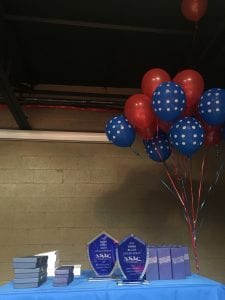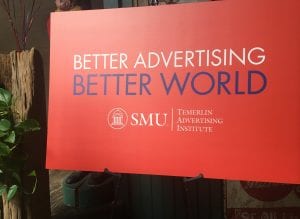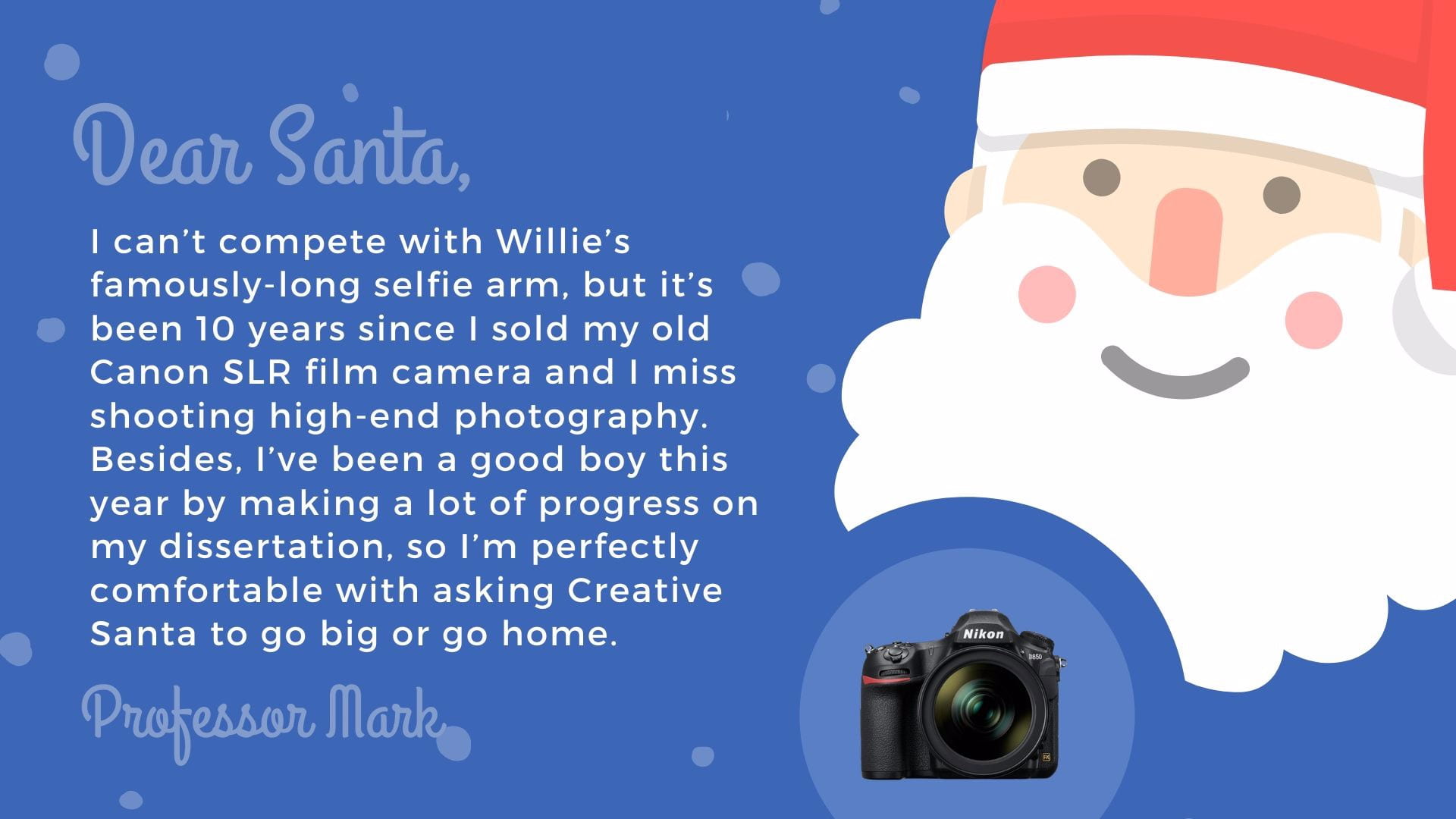Charlie Malekan and Claudia Iraheta from The Richards Group guest lectured in Gordon Law’s 3303 Advertising Media class on Thursday, January 23rd. In addition to sharing information about TRG with the students, they also shared their annual Media Trends presentation, summarized below.
Tag: TAI Faculty
Temerlin Advertising Institute faculty are studying ways to encourage bystander action when they encounter victims of domestic violence.  According to the CDC, “About 1 in 4 women and nearly 1 in 10 men have experienced contact sexual violence, physical violence, and/or stalking by an intimate partner during their lifetime.”
According to the CDC, “About 1 in 4 women and nearly 1 in 10 men have experienced contact sexual violence, physical violence, and/or stalking by an intimate partner during their lifetime.”
According to the research, bystander intervention is one way to help minimize occurrences of domestic violence. However, bystanders tend to be apathetic toward the victims they happen to encounter or observe.
In the research published in the Journal of Advertising, Dr. Carrie La Ferle and Dr. Sidharth Muralidharan examined the role of guilt and shame on attitude toward the ad and reporting intention of bystanders in India. While the effectiveness of negative emotions has been thoroughly researched in the West, conceptualizing guilt and shame from an Eastern perspective and using fluency in processing theory revealed that ads featuring emotional appeals strengthened reporting intention more than control ads did.
Professor Muralidharan explained that this action occurs through self-construals which impact the ways that the different emotions elicited are processed. Self-construal refers to the grounds of self-definition, and the extent to which the self is defined independently of others or interdependently with others and is thought to vary between Westerners and East Asians.
With respect to the findings, Dr. Muralidharan thought that it was interesting that shame was more effective than ads with guilt and the control. However, what was more intriguing was that ads with negative emotions (and lack of) were equally effective among those with an independent self-construal. Basically, such ad appeals were not as important as the duty to help a victim in need. A probable answer lies in research that touches on the characteristics of the independent self-construal (being assertive, autonomous, and possessing a stronger sense of equality), which could explain these gaps in future studies.
According to Dr. La Ferle, “We hope that this research will allow for more impactful public service announcements in India and further prosocial causes by encouraging people to take action in response to perceived needs.” This is one way SMU Advertising research is helping to create better advertising which leads to a better world.
For more information see:
Dr. Carrie La Ferle, Dr. Sid Muralidharan & Dr. Anna Kim “Using Guilt and Shame Appeals from an Eastern Perspective to Promote Bystander Intervention: A Study of Mitigating Domestic Violence in India” Journal of Advertising, 2019.
“I literally look homeless right now.”
Words overheard from a classmate in my 9:30 am Logo Design class.
Her outfit: a pair of sweatpants and a loose-fitting t-shirt.
The word “homeless” carries such a heavy stigma, and that weight falls on the shoulders of those who have been there.
Creative Advertising professor, Willie Baronet, has been buying and collecting homeless signs for a project titled WE ARE ALL HOMELESS which he created in 1993. To me, this project acts as a gesture to humanize the people who have unwillingly been made invisible. While interacting with a homeless person on a street corner, I’m certain I’m not the only one who fiddles with my A/C, pretends to see something important on my phone, or just looks the other way. The people who find themselves in such adverse circumstances are completely ignored. Reduced to nothing but sharpies on cardboard.
On a chilly November morning, Willie Baronet brought Home is a Journey to SMU. The first annual walk to raise awareness about homelessness, compassion, gratitude and privilege. Students and supporters marched from Doak Walker Plaza to Dallas Hall Lawn, carrying authentic homeless signs, created and held by someone experiencing homelessness. A lineup of compelling speakers shared their stories about experiencing homelessness, an eye-opening and humbling experience for everyone in attendance.
Baronet recounts the event, “The most poignant moment of the whole march was when we turned right on the boulevard. I looked back and saw a line of 120 people, nobody smiling, nobody talking, all carrying signs…the gravity of that image was so powerful.”
This week, the majority of SMU’s student body will go home for the holidays.
Which prompts the question: What is home?
Is it a group of people? A familiar location? A feeling?
Whatever home means to you, this project intends to shift your perspective, remove the stigma around homelessness and create a sense of gratitude for what you do have.
http://www.weareallhomeless.org/
Photos:
https://www.facebook.com/SMUMeadows/posts/10156661120142963
Kaleb Mulugeta
 Dr. Sid Muralidharan recently co-authored “What triggers young Millennials to purchase eco-friendly products?: the interrelationships among knowledge, perceived consumer effectiveness, and environmental concern.” (Journal of Marketing Communications, Volume 25, 2019, Issue 4)
Dr. Sid Muralidharan recently co-authored “What triggers young Millennials to purchase eco-friendly products?: the interrelationships among knowledge, perceived consumer effectiveness, and environmental concern.” (Journal of Marketing Communications, Volume 25, 2019, Issue 4)
Abstract:
As the attention to environmental sustainability heightens, marketers increasingly claim that their products help preserve the environment. Without proper understanding of how emerging target markets, such as young Millennials, are triggered to purchase green claims, their efforts may be futile. Accordingly, the current study examined the interrelationships among major environmental antecedents, such as environmental knowledge (EK), perceived consumer effectiveness (PCE), and environmental concern (EC) on environmentally conscious consumer behaviour (ECCB). The results of an online survey with younger Millennials revealed that EK and EC were significant predictors of ECCB, with EC being the stronger predictor. Unlike past literature, PCE was not directly related to ECCB. The study also found a strong mediating role of EC between EK and ECCB, as well as PCE and ECCB. Implications for green marketers are discussed, along with theoretical discussion.
Click for the full publication: https://www.tandfonline.com/doi/abs/10.1080/13527266.2017.1303623
 Abstract:
Abstract:
The persuasiveness and popularity of narratives in commercial advertising has gained much attention but its application in inculcating responsible behaviour is severely limited. Domestic violence against women is a global issue and there is a dire need for effective bystander intervention campaigns. This two-part study delves into how narratives could be employed to elicit favourable ad attitudes and encourage bystanders to report instances of domestic abuse in their neighbourhood. Study 1 focused on testing the effectiveness of narratives in two culturally diverse countries – India and the United States. In general, findings showed that narratives (vs. non-narratives) were more persuasive in both countries. As the next step, using culture (interdependence vs. independence) and social distance (parents vs. neighbours), Study 2 found narratives with a socially proximal entity (parents) to be more persuasive in India while no differences between countries were observed for the socially distant entity (neighbours). Theoretical and managerial implications are discussed.
Click here to read the full article on LinkedIn.
Temerlin Advertising Institute (TAI) faculty members Carrie La Ferle and Amber Benson were among 25 Dallas women in advertising honored with the 2018 AAF Dallas Shining Stars Award, presented by the Dallas chapter of the American Advertising Federation. The awards were presented June 21 during a dinner ceremony at the Frontiers of Flight Museum in Dallas.
Inaugurated in 2017, the Shining Stars Award recognizes Dallas advertising women who are producing thought-provoking and innovative work, breaking through barriers to create something new, or forging partnerships that drive growth. AAF noted on its website that the Shining Stars winners are “community leaders, C-suite executives, co-founders, executive VPs, strategic masterminds, media mavens and more. They are breaking glass ceilings and making the Dallas advertising community look good.”
A noted scholar, Professor La Ferle conducts research on how culture impacts advertising and consumer behavior. She also has taught undergraduate and graduate classes in international advertising and ethics for over 20 years and has won several prestigious teaching recognitions at SMU, including both the Altshuler Distinguished Teaching Professor and Meadows Distinguished Teaching Professor awards. Benson is an executive-in-residence at TAI and the founder of Seamripper, an insights and innovation agency focused on high-growth companies. As a marketing consultant, she has over 20 years of experience in strategy development, digital marketing, e-commerce and corporate communications.
The impetus for creating the Shining Stars Award was frustration at the lack of recognition for talented women in the field. AAF wrote, “Last year, inspired after attending the Southwest Advertising Hall of Fame event, we googled ‘top women in Dallas advertising’ and the result was ‘The 10 Most Beautiful Women in Dallas.’ We thought … Dallas, we can do better than that! After a successful first year, we are proud to say when you google ‘the top women in Dallas advertising’ you will find our inaugural list of Shining Stars from 2017.”
“I commend Dallas AAF for being a leader in developing this award to highlight the many talented women in our field,” said Steve Edwards, chair of TAI. “I am delighted for our Temerlin Advertising Institute to have not one, but two women in advertising selected for this year’s Shining Stars Award. We do great work in Dallas and this award not only celebrates these talented 25 Dallas women, but also our entire Dallas advertising industry.”
 Pictured left to right at the 2018 AAF Shining StarS Awards ceremony are TAI guest Tanya Conovaloff; TAI Program Specialist Sandi Edgar, who accepted the award for Amber Benson; TAI guest Kelly Tokarczyk; and TAI professor and award recipient Carrie La Ferle.
Pictured left to right at the 2018 AAF Shining StarS Awards ceremony are TAI guest Tanya Conovaloff; TAI Program Specialist Sandi Edgar, who accepted the award for Amber Benson; TAI guest Kelly Tokarczyk; and TAI professor and award recipient Carrie La Ferle.
It’s time to celebrate another wonderful year of student and faculty accomplishments. We’ve recognized the achievements that make the Temerlin Advertising Institute an award-winning institute at SMU, and we could not be more proud of our talented students and faculty.
Below are all the industry and special awards earned by our students and faculty during the 2017-2018 academic year.

Industry Recognition
- AAF’s Most Promising Multicultural Student – Jennifer Nelson and Eric Sedeño
- AAF American Advertising Awards (ADDYs) – Samantha Butz, Lucas Crespo, Tiffany Giraudon, Jolie Guz, Madeline Khare, Grace LaMontagne, Grey McDermid, Kirsty McLauchlan, Caroline Moss, Jennifer Nelson, Helen Rieger, Eric Sedeño, Matthieu Smyth.
- AAF Stickell Internship – Austin Inglett and Dalya Romaner.
- AFF 10th District Scholarship: Alissa Llort and Avery Lewis
- Advertising Education Foundation MADE Internship: Eric Sedeño
- Alliance for Women in Media (AWM) Dallas Irene Runnels-Paula McStay Scholarship – Alissa Llort
- DFW Interactive Marketing Association Scholarship – Hannah Tymochko
- DSVC National Show Best Print Advertising Campaign, Best Copy & Judge’s Choice – Tiffany Giraudon, Laura Walsh and Caroline Moss.
- National Student Advertising Competition, SMU-TAI’s Ad Team: Third Place and Special Judges Award for Best Market Segmentation
Student Organizations
- SMU Ad Club Officers
| Joanna Fennessy | President |
| Sara Jane Stephens and Alex Mackillop |
Co-Membership Chairs |
| Lex Pedraza | Treasurer |
| Peyton Turbeville | Event Planning Chair |
| Eric Sedeño | Communications |
- National Student Advertising Competition | Ad Team –
Hayley Banas, Myla Borden, Mary Charles Byers, Amy Cooley, Rita de Obarrio, Harrison Fiveash, Anne-Marie Geisler, Alissa Llort, Alex Mackillop, London Mercer, Shelby Pointer, Juan Reyes, Sara Jane Stephens, Sara Ann Whiteley and Frank Zhang.
Institute Scholars
- Engaged Learning Project – Samantha Butz
- Morris Hite – Zachary Crosby
- Roger and Rosemary Enrico – Andrea Rosas
Honors
- Alpha Delta Sigma – Joanna Fennessy
- Kappa Tau Alpha – Arin Forstenzer, Tiffany Giraudon, Caroline Moss, Rachel Kainer, Cheyenne Tilford.
- Hunt Scholar – Riley Blair
- SMU Mortar Board Top 10 Sophomore – Rachel Kainer and Jolie Guz
Institute Awards

TAI STUDENT AWARDS:
|
TAI FACULTY AWARDS
|


Step Away From the Google Doc
Fostering True Collaboration
by TAI Professor Amber Benson
Today, Jeff Bridges will deliver the final talk in the SMU Tate Distinguished Lecture series. Most college students know Jeff Bridges for his role as The Dude in the cult movie The Big Lebowski. Your film professors would probably remind you that he is also a seven-time Academy Award nominee, with a win in 2010 for his starring role as a down-on-his-luck musician in Crazy Heart.
But my first memory of Jeff Bridges was seeing him in a quirky science fiction movie called TRON. In it, Jeff Bridges plays Kevin Flynn, a computer hacker that gets digitized–by a laser, no less–and trapped inside a mainframe computer. While there, he partners with other programs to break free and keep himself from de-rezzing (or dying). The special effects, which look like a bad 80s nightclub to a modern-day viewer, were groundbreaking. Although Disney updated the franchise (and Bridges reprised his role) in 2010, it’s worth checking out the original.
Or you could just visit one of my classes. Because I think the ghosts of TRON haunts the halls of Umphrey Lee.
Recently, I’ve noticed a disturbing trend. Whenever I encourage my students to work in groups, I watch as they circle up their desks, fire up their laptops and then go radio silent. They are sitting right next to one another, yet they are miles apart. And I know exactly what’s going on.
They are trapped in a Google Doc.
As a professor of digital advertising, I encourage my students to use technology to their advantage. I just wonder if that confab of multi-colored cursors in your browser is helping you achieve your goals. Sure, you are creating a document together, but are you actually creating value?
Value creation is at the heart of the advertising industry. As advertisers we create that value by turning insights into ideas. And to do that, we need to bring various perspectives to bear on the challenges our clients give us. And that requires more than mere collaboration. It requires dialogue.
The word dialogue has Greek origins, its roots are “dia,” which means “through” and “logos” which means “speech.” Dialogue literally means to “pass through speech.” It is the literal exchange of words that propels ideas forward.
Imagine that I give you a small piece of moldable clay and tell you to create a bust of Abraham Lincoln. You could try to do it yourself. You could make your best attempt and then give it to someone else to revise or edit. In the end, you might achieve your goal, but a linear, sequential process leaves little room for inspiration or optimization.
Alternatively, by working collaboratively, gathering team members and talking through the challenge, you are far more likely to achieve your goal and to do it in a shorter amount of time. Why? Like atoms bouncing off of one another, insights create energy when they are combined. And once you hit on the perfect combination, that clarity provides momentum. When everyone fully “gets” the concept, then you delegate tasks without losing cohesion.
At one point in TRON, Kevin Flynn says, “On the other side of the screen, it all looks so easy.” Collaboration software, such as Google Docs and Slack, can be useful tools in coordinating team member contributions, but they cannot think for you. And that focus on finishing the assignment rather than solving the problem is “de-rezzing” your grades.
So, next time you get a group assignment, step away from the Google doc and toward a white board. Grab a pack of Post-Its and a Sharpie. Visualize your data. Start a dialogue.
Escape the machine.

Mentoring (and Caring) for Ad Students
by Dr. Alice Kendrick, Marriott Professor of Advertising
Do you have a mentor? Who is that person? A professor? Professional? This is a question worth asking and a goal worth pursuing.
Research indicates that having a mentor can contribute to not only career success but also to psychological and physical well-being. Yet only about one in five college graduates claim to have had a mentor while in school, according to a 2014 Gallup-Purdue survey. Having someone “who encouraged me to pursue goals and dreams” makes a student twice as likely to enjoy an engaging career, according to that study. There isn’t a lot of research about advertising mentors specifically, though a survey of business students at a northeastern university and alumni 3-5 years out (D’Abate 2010) found that mentoring provided short-term psychosocial support and also advanced mentees’ career development and business knowledge in the first five years on the job.
A study in the late 1990s found that minority advertising students reported they wished they had mentors while in college as well as later in the workplace. About half of the students in a 2008 study of university ad club chapter members said they had mentors, and in many cases those mentors were college professors. In a related finding, the Gallup-Purdue study reported graduates were almost twice as likely to achieve an engaging work life if “My professors at [College] cared about me as a person.” (p. 10)
The advertising employment landscape can be complicated, and unlike some areas of study and work like engineering and investment banking, hiring opportunities don’t follow a specified pattern. That means that ad students looking to enter the ad industry could benefit from guidance and support of a mentor or mentors along the way. And while professors often serve as defacto mentors for students, there are many other sources of mentors such as members of local professional advertising clubs, speakers who visit campus, internship supervisors, university alumni and family friends and acquaintances. Students and faculty should seek as many opportunities as possible to enjoin professionals beyond the university to augment student learning, networking and pre-employment socialization. Professional role models and professional relationships are a key ingredient to a successful career.

Sources consulted
Kendrick, Alice, Jami Fullerton and Mallorie Rodak (2010), “Advertising student interns: Career preferences and ethical issues,” Journal of Advertising Education, 14(2), 42-51.
The 2014 Gallup-Purdue Index Report (2014). Great Jobs. Great Lives. Gallup, Inc. Retrieved from http://www.purdue.edu/newsroom/releases/2014/Q2/gallup-purdue-index-releases-inaugural-findings-of-national-landmark-study.html
Fullerton, Jami, Alice Kendrick and Connie Frazier (2007), “Job Satisfaction Among Minority Advertising Professionals.” Paper presented at the Association for Education in Journalism and Mass Communication national conference, August, Washington DC.
D’Abate, C. (2010), “Developmental Interactions for Business Students: Do They Make a Difference?” Journal of Leadership and Organizational Studies May, 17(2), 143-155.









